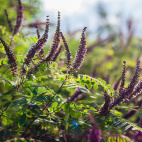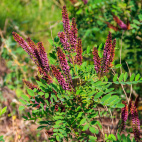Lead Plant Seeds
Amorpha canescens
- HOW TO GROW
- FAST FACTS
HOW TO GROW
Sowing: For best germination, Lead Plant seed should be stratified and scarified. This can be accomplished by pouring 180 degrees F water over the seed, soaking it overnight, and direct sowing it in the fall. For spring sowing, mix the seed with an equal amount of sand and store it in the refrigerator for 4-6 weeks, then soak it overnight and direct sow after the last frost. To start the seed indoors, sow it just below the surface of a flat; keep the soil evenly moist and at a temperature of 70 degrees F. Germination should take place within 20-30 days.
Growing: The wild tea plant grows very slowly because of the development of its extensive root system, which can grow up to 4 feet in length; flowers may not develop until the third year of its growth. Plants should be watered deeply every few weeks for the best growth, though they do survive drought conditions well and tolerate high winds. This plant grows best in dry or well drained soil and full sun, though it adapts to partial shade. Pruning the plant back to 12" in late fall will produce healthy growth in its next season. Though this variety may spread by self-seeding, germination and development will be slow and not invasive. Lead Plant tends to die back to the ground in the winter, coming back every spring. Watch out for deer, rabbits, and rodents, since they may damage the plant's growth. This plant attracts butterflies and bees.
Harvesting: Wild tea plant makes an unusual, striking cut flower. Cut the stems as soon as the flower spikes begin to bloom.
Seed Saving: The purple flower spikes of the wild tea plant will change color and develop mature seed in late summer or early fall. Strip the tiny seed pods from the stem and spread them out to dry away from direct sunlight. The Lead Plant seeds can be planted with the hull intact, since this does not prevent them from germinating. Store tea plant seeds in a cool, dry place.
FAST FACTS
Common Names: Prairie Shoestring, Wild Tea
Latin Name: Amorpha canescens
Species Origin: US Native Wildflower
Type: Native Wildflowers
Life Cycle: Perennial
USDA Zones: 3, 4, 5, 6, 7
US Regions: Plains/Texas, Midwest, Northern
Seeds per Ounce: 7,200
Stratification: Cold/Wet for 1 Week
Germination Ease: Stratify 1 Week
Sunlight: Full Sun, Part Sun
Height: 36 Inches
Color: Purple
Bloom Season: Blooms Early Summer, Blooms Late Summer
Uses: Attracts Pollinators, Deer Resistant
DESCRIPTION
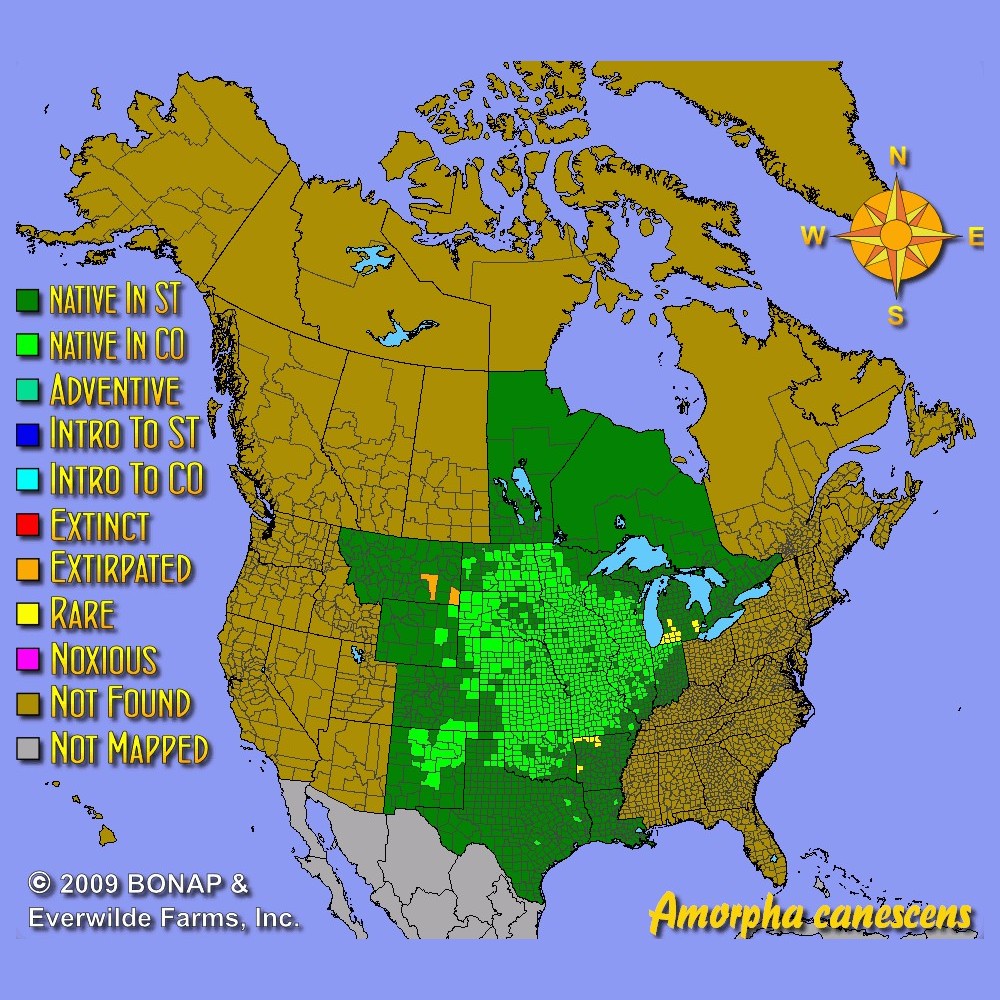
HOW TO GROW
Sowing: For best germination, Lead Plant seed should be stratified and scarified. This can be accomplished by pouring 180 degrees F water over the seed, soaking it overnight, and direct sowing it in the fall. For spring sowing, mix the seed with an equal amount of sand and store it in the refrigerator for 4-6 weeks, then soak it overnight and direct sow after the last frost. To start the seed indoors, sow it just below the surface of a flat; keep the soil evenly moist and at a temperature of 70 degrees F. Germination should take place within 20-30 days.
Growing: The wild tea plant grows very slowly because of the development of its extensive root system, which can grow up to 4 feet in length; flowers may not develop until the third year of its growth. Plants should be watered deeply every few weeks for the best growth, though they do survive drought conditions well and tolerate high winds. This plant grows best in dry or well drained soil and full sun, though it adapts to partial shade. Pruning the plant back to 12" in late fall will produce healthy growth in its next season. Though this variety may spread by self-seeding, germination and development will be slow and not invasive. Lead Plant tends to die back to the ground in the winter, coming back every spring. Watch out for deer, rabbits, and rodents, since they may damage the plant's growth. This plant attracts butterflies and bees.
Harvesting: Wild tea plant makes an unusual, striking cut flower. Cut the stems as soon as the flower spikes begin to bloom.
Seed Saving: The purple flower spikes of the wild tea plant will change color and develop mature seed in late summer or early fall. Strip the tiny seed pods from the stem and spread them out to dry away from direct sunlight. The Lead Plant seeds can be planted with the hull intact, since this does not prevent them from germinating. Store tea plant seeds in a cool, dry place.
FAST FACTS
Common Names: Prairie Shoestring, Wild Tea
Latin Name: Amorpha canescens
Species Origin: US Native Wildflower
Type: Native Wildflowers
Life Cycle: Perennial
USDA Zones: 3, 4, 5, 6, 7
US Regions: Plains/Texas, Midwest, Northern
Seeds per Ounce: 7,200
Stratification: Cold/Wet for 1 Week
Germination Ease: Stratify 1 Week
Sunlight: Full Sun, Part Sun
Height: 36 Inches
Color: Purple
Bloom Season: Blooms Early Summer, Blooms Late Summer
Uses: Attracts Pollinators, Deer Resistant
Also Consider These:
-
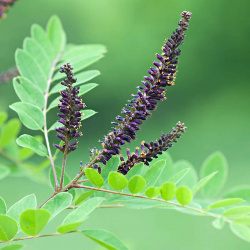 On Sale!
False Indigo Seeds
Amorpha fruticosa
Growing naturally in prairie meadows, False Indigo thrives across most of the United States. This native shrub also has attractive, sweet-scented foliage. Cannot ship to WA State.Quick View$3.48 Pkt - $14.49 / Oz
On Sale!
False Indigo Seeds
Amorpha fruticosa
Growing naturally in prairie meadows, False Indigo thrives across most of the United States. This native shrub also has attractive, sweet-scented foliage. Cannot ship to WA State.Quick View$3.48 Pkt - $14.49 / Oz -
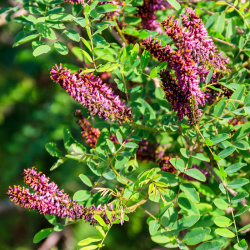 On Sale!
Fragrant False Indigo Seeds
Amorpha nana
This drought tolerant, low-growing shrub grows naturally in the open prairie or on rocky hillsides. Its extensive root system makes it extremely effective in erosion control, or as a windbreak.Quick Viewx
On Sale!
Fragrant False Indigo Seeds
Amorpha nana
This drought tolerant, low-growing shrub grows naturally in the open prairie or on rocky hillsides. Its extensive root system makes it extremely effective in erosion control, or as a windbreak.Quick ViewxFragrant False Indigo Seeds
Amorpha nana
This drought tolerant, low-growing shrub grows naturally in the open prairie or on rocky hillsides. Its extensive root system makes it extremely effective in erosion control, or as a windbreak.
$3.75 Pkt - $80.00 / Oz








